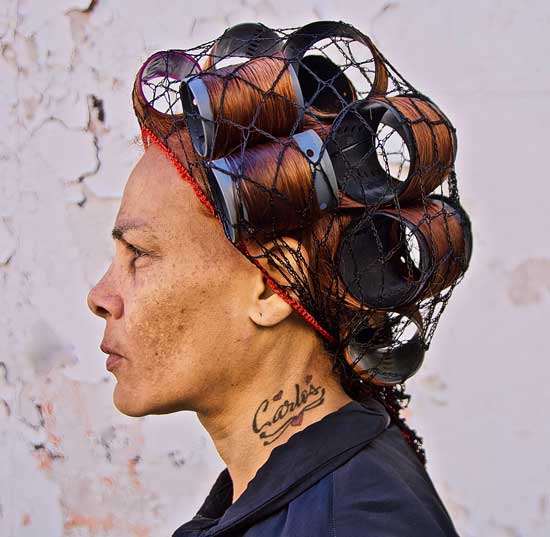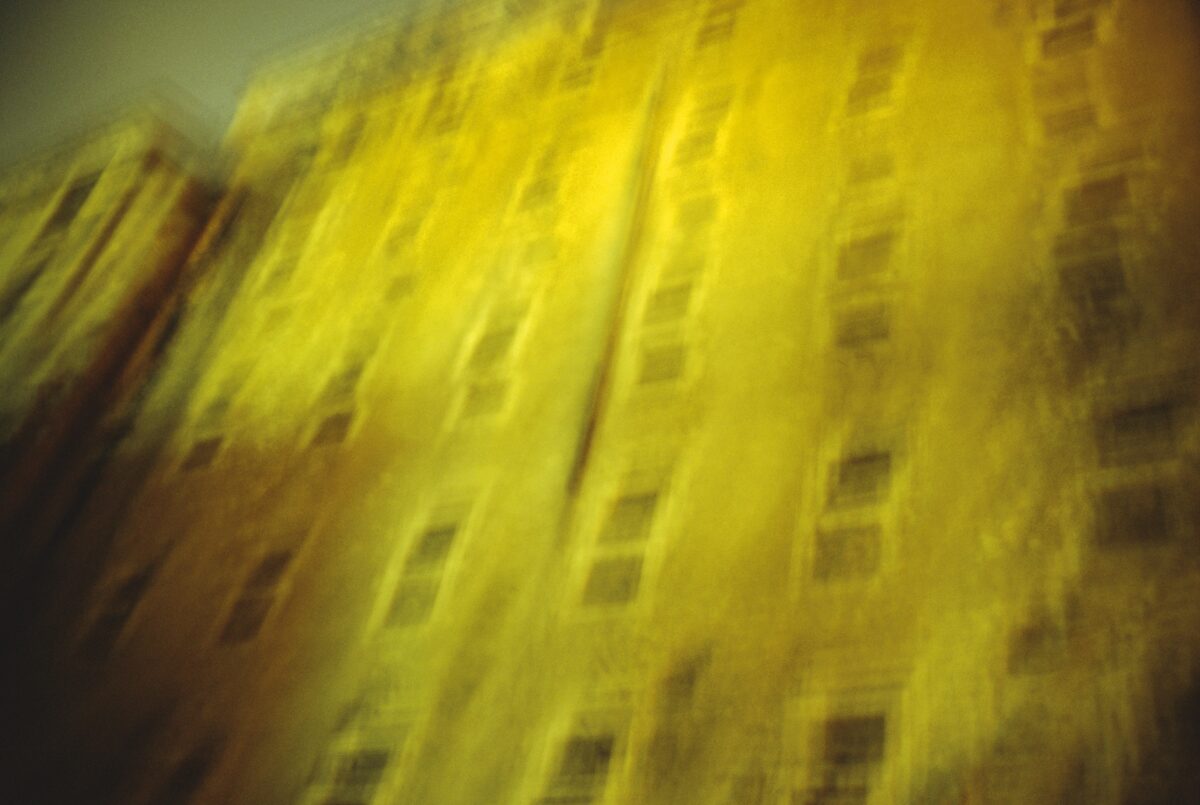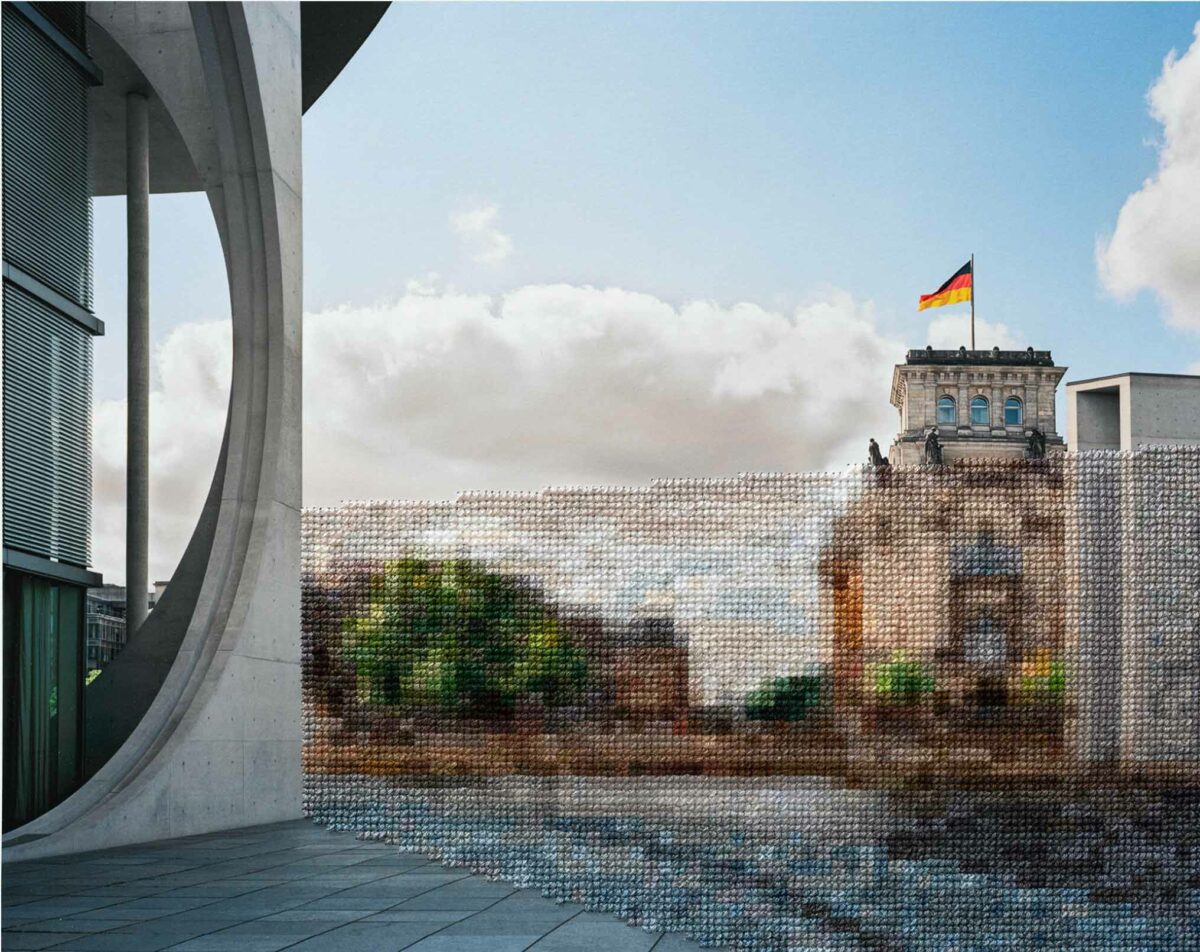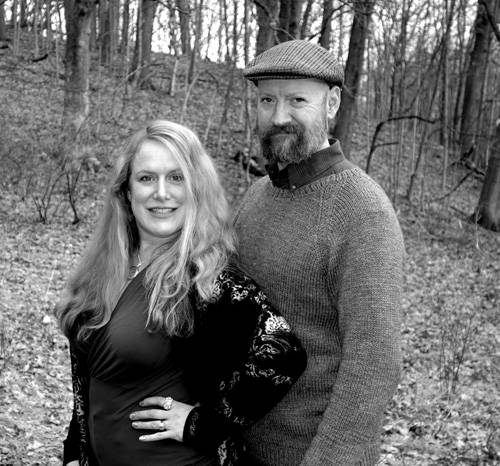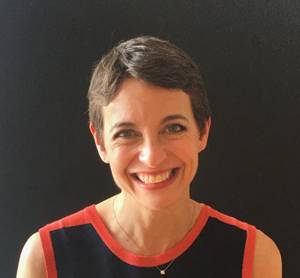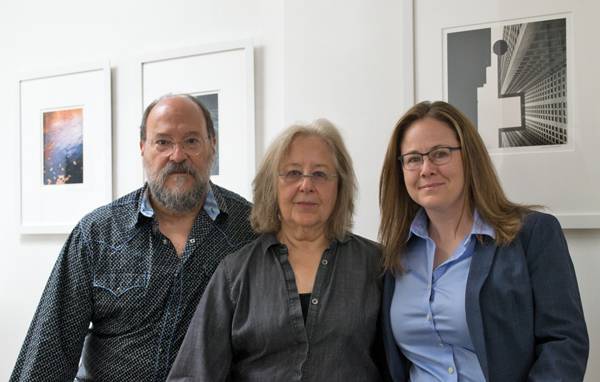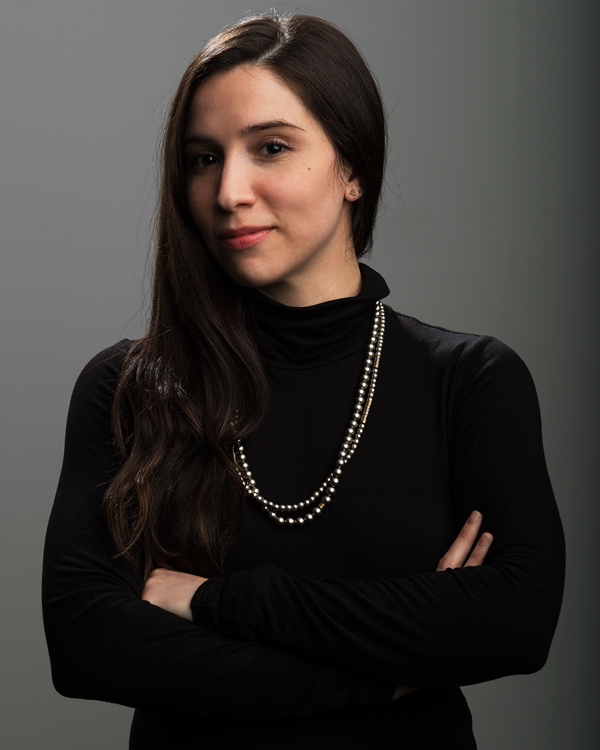

Liz Deschenes’s new photograms never quite settle, but reveal details of their production as viewers move in front of them. Exposed in trays of developer outdoors under the moonlit sky before being developed and toned, each of her pieces becomes an index of the surrounding buildings’ stray light or the weather conditions that affect the chemical processes involved. In addition, Deschenes’s photograms slowly oxidize over time, reaffirming her steady, inquisitive experiments in photography.
The show at Miguel Abreu Gallery in the spring included two series that take as a starting point Étienne-Jules Marey’s 19th-century experiments in isolating and recording movement. The works in “FPS” (Frames per Second) are cut and mounted directly on vertical strips of dibond, and those in “FPF” (Frames per Feet) are pressed closely in thin, horizontal frames. Both series are hung and spaced carefully, progressing with the rhythm of footsteps – except the viewers are now the subjects, their reflections becoming pictures that move and change speed depending on the width and number of photograms.


The photograms’ technical and conceptual framework is smart and poetic, but understanding it is not crucial, and a sense of mystery only adds to their ethereal effect. The textures evoke the nap of suede or the act of photographing something but never being able to grab focus. Pockmarked chemical burns dent the photograms’ surfaces and break viewers’ reflections – blunt, blackened, but a little cosmic, like rocks in space or the tiny marks in a Vija Celmins painting.
Deschenes’s photograms feel purposeful but melancholic, almost as if excluded from the category of photography as we know it. But there is something defiant about her decision to make these furiously etched, laboriously processed, cameraless images – which involve toxic chemicals and can take a full 36 hours from set up to clean up. And perhaps it’s the heat of that charge, coupled with the light that these photographs hold and refract, that make them shine and hum, pushing all the expectations of the medium.

